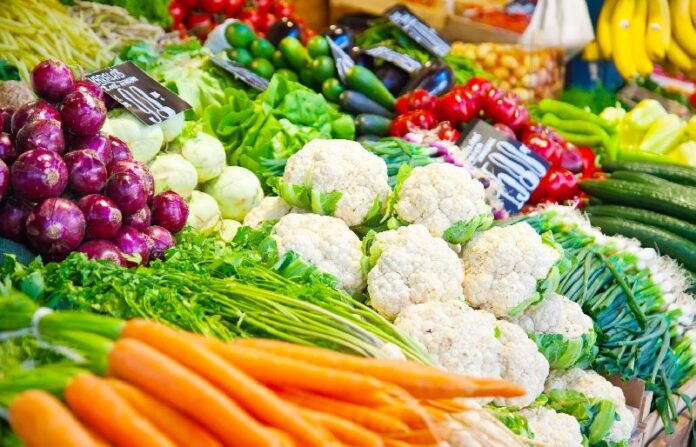Agartala, Tripura – Consumers in Tripura are grappling with a sharp rise in vegetable prices, leaving many households struggling to cope with the increasing cost of essential food items. The steep hike in prices, triggered by a combination of unfavorable weather conditions, transportation issues, and supply chain disruptions, has put significant pressure on families, particularly those in lower-income brackets.
Over the past few weeks, prices of commonly consumed vegetables like potatoes, onions, tomatoes, and green leafy vegetables have surged by up to 50-80%, making it difficult for many to afford even the most basic staples. The rapid escalation in prices has sparked widespread concern and frustration among consumers, traders, and local authorities.
The Price Surge: Causes and Impact
The current spike in vegetable prices has been attributed to several factors. One of the primary reasons cited by traders and agricultural experts is the irregular monsoon pattern that has affected both production and transportation. Heavy rainfall followed by dry spells in key vegetable-growing regions across the country has led to crop damage, resulting in a reduced supply to local markets.
In Tripura, which relies heavily on supplies from neighboring states like Assam and West Bengal, the impact of these disruptions has been particularly severe. Many traders in Agartala’s main markets have reported delays in shipments, further driving up prices due to limited availability.
Transportation costs have also played a significant role in the price hike. With rising fuel prices, the cost of bringing vegetables from other states has increased, forcing traders to pass these additional expenses onto consumers. The combination of reduced supply and higher transportation costs has caused prices to skyrocket.
For instance, the price of onions, a kitchen staple in most households, has more than doubled in the past month. Onions, which were being sold for Rs 30-40 per kilogram earlier, are now retailing at Rs 80-100 per kilogram. Similarly, tomatoes, which were priced at Rs 40 per kilogram, have shot up to Rs 80-90 per kilogram. Other vegetables such as brinjal, cabbage, and beans have also seen significant increases in their prices.
The soaring costs are forcing consumers to cut back on their purchases, with many households opting for cheaper alternatives or reducing their vegetable intake altogether. For low-income families, who already face economic challenges, the price hike has been particularly burdensome.
Consumers Struggling to Cope
The sudden rise in vegetable prices has hit the pockets of consumers hard, especially daily wage earners, small business owners, and middle-class families who are finding it difficult to manage their household budgets. Many consumers, speaking at local markets in Agartala, expressed frustration over the situation.
Shobha Das, a homemaker from the outskirts of Agartala, shared her struggle to keep her family’s grocery budget in check. “We used to buy vegetables for around Rs 150-200 a day, but now it’s almost double. I’ve had to cut down on the variety of vegetables I buy, and it’s affecting our meals,” she said.
Similar concerns were raised by Madhav Pal, a daily wage worker, who said that the soaring prices are making it harder for his family to get by. “Our wages haven’t increased, but the cost of everything is going up. Vegetables, which we rely on, are now becoming unaffordable. I’m worried about how we will manage if this continues,” he said.
Many consumers are turning to smaller markets or local vendors in hopes of finding slightly lower prices, but the overall inflation has left few alternatives. Even in rural areas, where produce is typically more affordable, prices have surged due to the broader supply chain disruptions.
Government Response and Measures
In response to the crisis, the Tripura government has acknowledged the growing concerns and has taken steps to address the issue. Officials from the state’s agriculture and food supply departments have stated that they are working to ensure smoother transportation of vegetables and to stabilize prices by coordinating with suppliers from neighboring states.
The government has also announced plans to set up temporary markets or “mandis” in key areas to sell vegetables at subsidized rates, aiming to provide some relief to consumers. Additionally, discussions with the central government have been initiated to explore the possibility of sourcing vegetables from surplus-producing regions to mitigate the shortages.
Despite these efforts, it may take some time before prices stabilize. Experts have suggested that until the supply chain normalizes and new harvests are brought to the market, the price surge may persist for several more weeks.
The skyrocketing vegetable prices in Tripura have left consumers in a difficult position, with many struggling to afford essential food items. As families cope with the rising cost of living, there is hope that government measures and improved supply conditions will eventually bring some relief. In the meantime, the people of Tripura continue to endure the financial strain of inflated vegetable prices, a daily reminder of the vulnerabilities in the food supply chain.




